Summary of climate disasters on the planet from July 2 to 8, 2025
Last week, a tragedy occurred in the United States — a sudden and catastrophically powerful flood that neither the authorities nor ordinary citizens were prepared for. And this happened in a country that has everything necessary: a disaster forecasting and public alert system, and the technical capabilities for emergency response.
In reality, if we look at the climate situation reasonably and honestly, it does not appear optimistic. There is no sign of improvement on the horizon. On the contrary — the situation is worsening.
Read more about the deadly flood in the United States and other events from the week of July 2 to July 8, 2025, in this article.
USA
The state of Texas, USA, experienced one of the deadliest natural disasters in its history. On the night of July 4, central regions were hit by torrential rains: in some areas, over a month's worth of rainfall fell within a day — up to 250 mm (9.8 in). Rainfall intensity reached 100 mm (3.9 in) per hour. Rivers rapidly overflowed their banks, flooding towns within minutes.
Kerr County, located in the Guadalupe River Valley, was particularly hard hit. The water level reached the second-highest mark ever recorded.
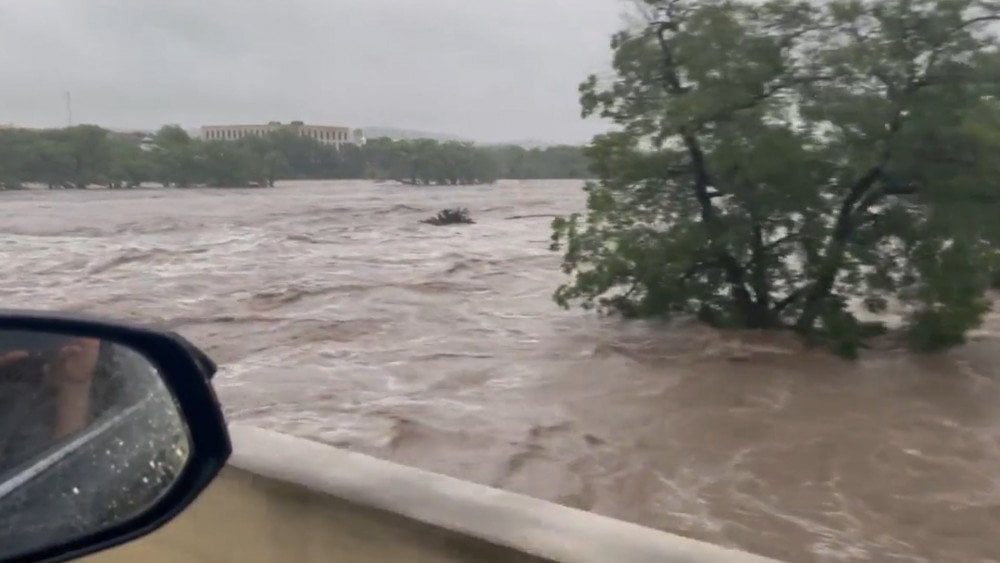
Deadly flood in the state of Texas: the Guadalupe River rapidly overflowed and claimed over a hundred lives, USA
Residents said they received no warnings. Since the county has no flood alert system, they were awakened not by sirens, but by the roar of the raging elements.
A deadly wave about 6 meters (19.7 ft) high swept away everything in its path, destroying homes and roads. An emergency evacuation of residents began.
The situation was especially tragic at Camp Mystic, a girls' summer camp, located on the riverbank. The water caught the children off guard as they slept in their cabins. Many of them were trapped with no way out. All communication with the camp was lost, and washed-out roads blocked rescue efforts. According to official reports, 27 children died here, with at least 5 more reported missing.
Search and rescue operations involving hundreds of specialists, Black Hawk military helicopters, and canine units continued for several days in Texas. More than 850 people were rescued from the disaster zone, many of them airlifted to safety.
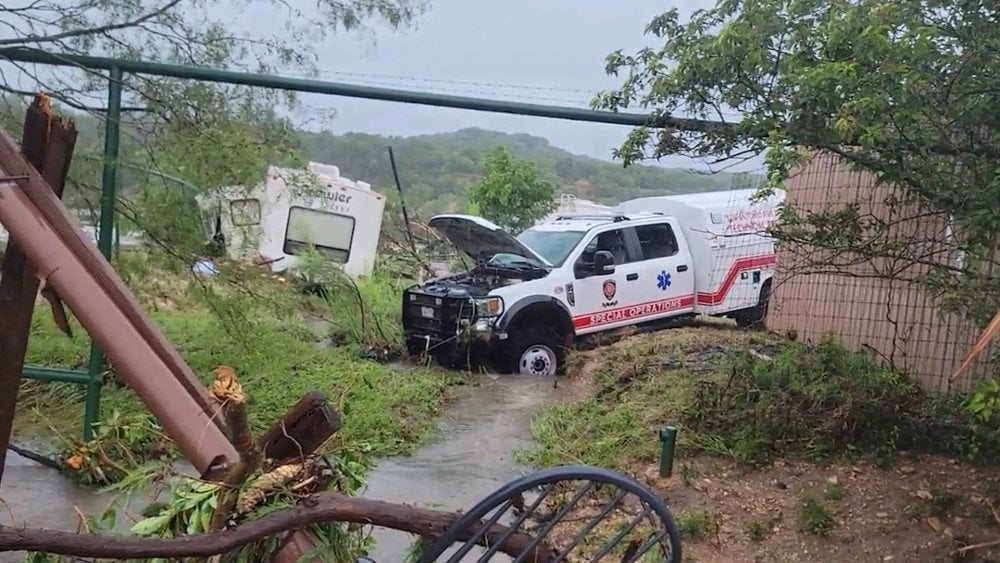
Aftermath of the devastating flood in the state of Texas, USA
As of July 8, the disaster had claimed 129 lives across six counties. The fate of another 170 people remains unknown.
Local authorities admitted that they did not anticipate a disaster of such a scale, and therefore no preventive evacuation was carried out.
Typhoon Danas
On July 6, the island of Taiwan was struck by Typhoon Danas. Even as it approached, coastal areas were already experiencing strong winds, heavy rain, flooding, and landslides.
A mudflow struck a fishing village, sweeping away everything in its path. Cars floated down the streets like boats.
Around midnight the same day, the eye of the typhoon made landfall in Chiayi County, near Budai Township — the first time in 120 years a tropical cyclone had reached this area. For Taiwan’s western coast, where typhoons rarely make landfall, Danas became a truly anomalous and destructive event.
Southern Taiwan was especially hard hit: in Yunlin County, wind gusts exceeded 217 km/h (135 mph).
In the city of Tainan, the storm completely destroyed the iconic gates of the Nankunshen Daitian Temple — a massive structure taller than a four-story building.
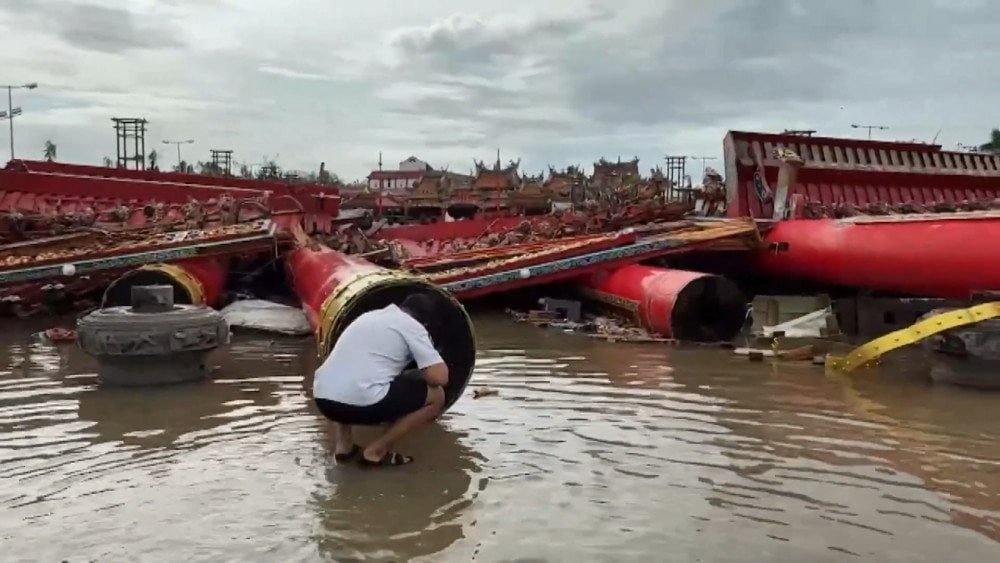
Taiwan after the disaster: gates of one of the largest temples in Tainan — Nankunshen Daitian Temple — destroyed
In Pingtung County, 636 mm (25 in) of rain fell in just two days — nearly two and a half times the monthly norm (the average July rainfall is 259.2 mm [10.2 in]).
Nearly 700,000 households across Taiwan were left without electricity.
According to the Central Emergency Operation Center, Danas claimed the lives of two people and injured more than 500.
Weakened to a tropical storm, Typhoon Danas struck China's Zhejiang Province, moved inland, and its effects — in the form of heavy rainfall — spread nearly 1,500 km (932 mi) from the coast.
Indonesia
On July 7 at 11:05 LT, a powerful eruption occurred on Flores Island in Indonesia, in East Nusa Tenggara Province, at Mount Lewotobi Laki-laki volcano.
The eruption was accompanied by a deafening roar and a pyroclastic flow. The ash plume rose up to 18 km (11.2 mi) above the summit, and a cloud of incandescent particles was carried 5 km (3.1 mi) by strong winds. The villages of Kringa, Hikong, Ojang, Timutawa, and Udek Duen, located on the slopes of the mountain, were plunged into complete darkness for 15 minutes and covered with a thick layer of volcanic ash, sand, and gravel. The acute shortage of drinking water in the region became even more severe due to contamination from volcanic fallout.

People flee the danger zone after the eruption of Mount Lewotobi Laki-laki, Indonesia
Local residents reported that this eruption was stronger than previous ones and began suddenly.
Due to the ash cloud threatening air traffic over eastern Indonesia, several airports were closed and dozens of flights were canceled — including flights to the island of Bali.
The alert level for the volcano remains at its highest. Authorities warned tourists and locals to stay at least 6 km (3.7 mi) away from the crater.
Later that same day, around 19:32 local time, the volcano erupted again, sending an ash plume up to 13 km (8.1 mi) high. The eruption was once again accompanied by loud rumbling and tremors.
Australia
A powerful bomb cyclone struck Australia’s east coast on the night of July 2, causing chaos in the state of New South Wales. The storm left more than 40,000 homes and businesses without power. Greater Sydney and the Illawarra region were hit by flooding, and dozens of roads were closed. Fallen trees and power outages disrupted train services. Ferry operations were also completely suspended.
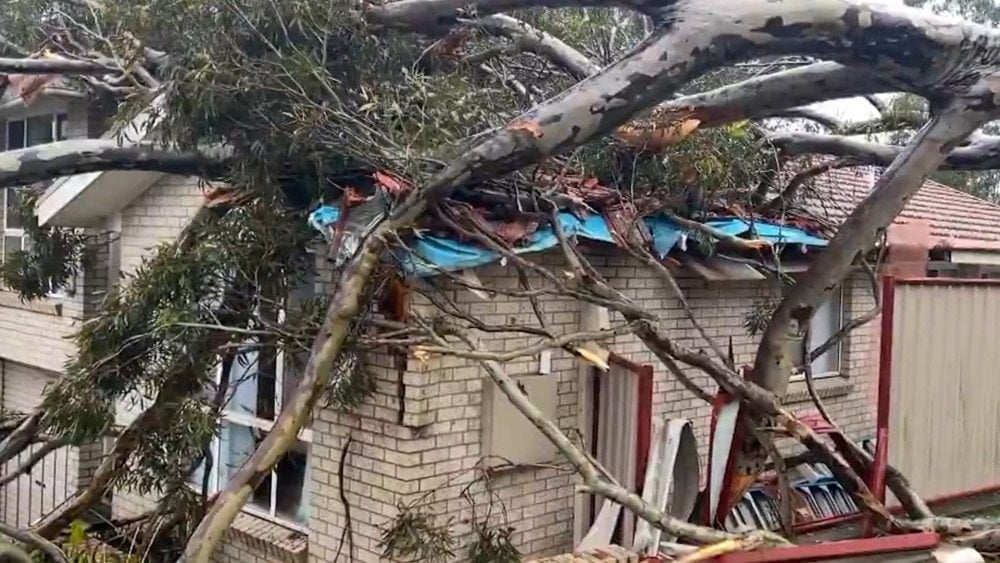
Aftermath of the severe storm in New South Wales, Australia
The storm brought powerful wind gusts: 124 km/h (77 mph) was recorded in Royal National Park, and 122 km/h (76 mph) on Montague Island.
At Sydney Airport, only one runway was operational due to high winds, and around 150 flights were delayed or canceled.
Due to the threat of coastal destruction from 4-meter (13 ft) waves, dozens of homes in the tourist towns of Entrance North and Wamberal on the Central Coast were put at risk — residents had to be evacuated.
In some coastal areas, wave heights reached up to 12 meters (39.4 ft), significantly accelerating coastal erosion.
In the town of Ulladulla and in the vicinity of Morton, more than 200 mm (7.9 in) of rainfall was recorded. A sharp rise in river levels led to large-scale flooding. In the Berrill Lake area, around 200 homes were flooded overnight.
Meteorologists note that this cyclone is one of the most destructive in terms of combined rainfall, wind strength, and coastal impact. Bomb cyclones are more common in the Northern Hemisphere and are rare in Australia, especially this close to land.
Türkiye
On July 2 and 3, the mountainous regions of northeastern Türkiye were hit by an unprecedented July snowfall — snow fell in the provinces of Rize, Bayburt, Erzurum, Trabzon, and Tunceli.
Temperatures dropped sharply, with some areas experiencing blizzards, strong winds, and near-zero visibility. Pastures and roads were blanketed in a thick layer of snow.
Türkiye faced an anomalous natural event — snowfall in the middle of summer
This abnormal phenomenon astonished even local elders — none of them could recall snow ever falling here at the height of summer.
China
Prolonged downpours in China’s Sichuan Province led to widespread flooding, mudflows, and landslides.
On July 4, a powerful mudflow struck Shenzu Villages No. 1 and No. 2 in Danba County, Garzê Tibetan Autonomous Prefecture — over 200,000 m³ (7 million ft³) of rocks and mud cascaded down the mountains.
As a result, residential buildings, power lines, and road infrastructure were damaged. Farmlands were also affected.
Four people who were herding livestock in the mountains at the time of the disaster went missing. More than 1,700 people were forced to evacuate.
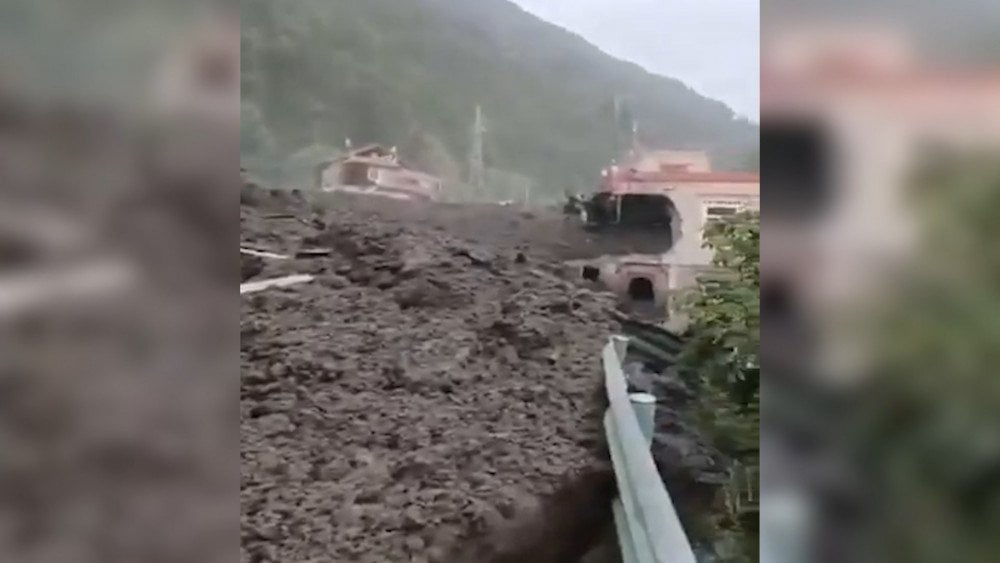
Powerful mudflow cascaded from the mountains in Sichuan Province, China
On July 5, in Tianquan County, Ya’an prefecture-level city, a landslide occurred on National Highway 318 near Chengxiang Township.
Several vehicles were buried under the debris. Three people were killed, and the fate of two others remains unknown.
Russia
On July 4, a powerful downpour with hail hit Tyumen. Within two hours of rain, streets, residential buildings, parking lots, shops, and malls were flooded.
In some areas, the water level reached the windows of the ground floor. Public transport operated intermittently. After the storm passed, traffic jams rated 10 out of 10 were reported on the city’s roads. Meanwhile, the city’s weather station recorded only 7 mm (0.28 in) of precipitation.
This once again proves that such events can be extremely destructive yet highly localized — and may not even fall within the measurement zone.

Torrential downpour paralyzed traffic and flooded the streets of Tyumen, Russia
The day before, in the Ishimsky District of the region, large hail up to 4 cm (1.6 in) in diameter fell, damaging homes, vehicles, and crops.
On July 4, the city of Omsk was hit by a powerful storm with lightning and heavy rain. Wind gusts reached 35 meters per second (about 78 mph). A destructive squall toppled around 200 trees, knocked over bus stops, tore off balconies and roof panels, and shattered window frames. A sheet of metal pierced a bus while it was in motion. The storm damaged dozens of vehicles and buildings, causing traffic congestion.
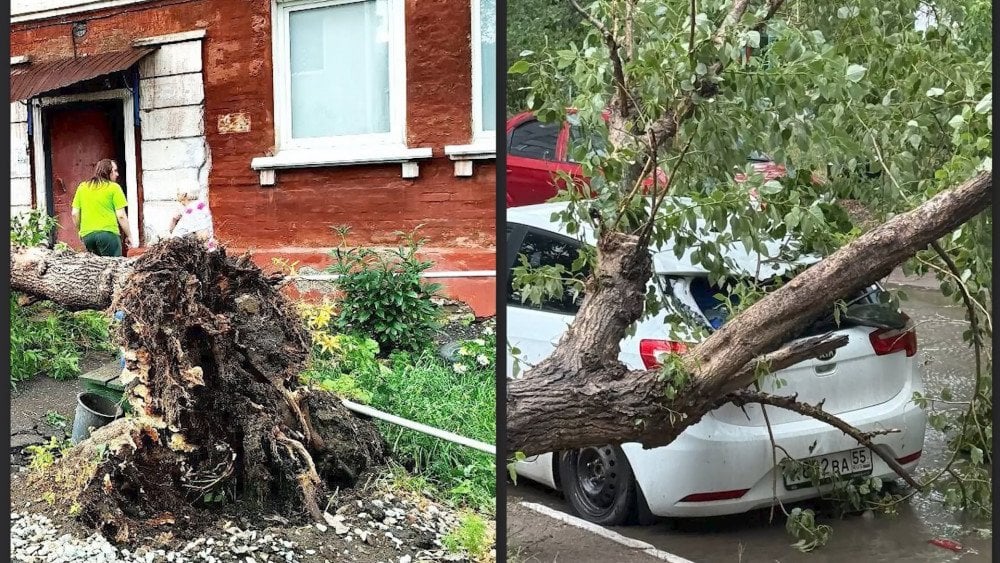
Severe storm struck Omsk, Russia: trees downed, buildings and cars damaged
Entire neighborhoods had power outages, and gas supply was partially disrupted.
Five people were injured during the storm. A woman sustained injuries and was in shock after part of a balcony collapsed near her as she was exiting the building. Four others were injured by falling structures, trees, and metal sheets torn from rooftops.
On July 3, Khabarovsk was hit by an intense downpour: in just 40 minutes, nearly a quarter of the monthly rainfall fell — 32 mm (1.26 in) (July average is 137 mm [5.39 in]).
In some areas, visibility dropped to just a few meters due to the “wall” of rain. Streets, courtyards, and parking lots were submerged, and cars stalled in raging currents.
Gusty winds reaching 20 m/s (45 mph) knocked down trees and fences and ripped off billboards. Thousands of residents were left without power.
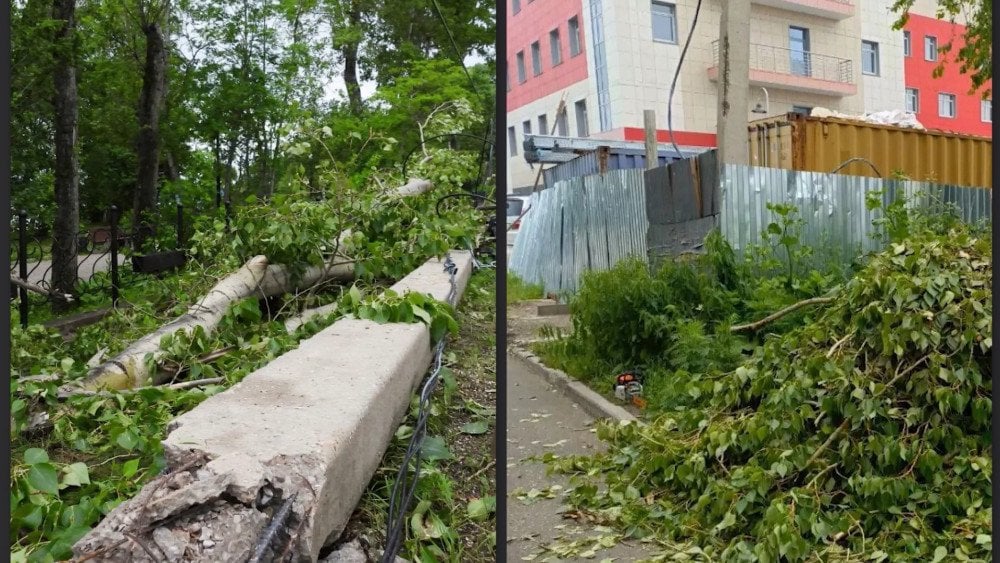
Strong winds downed trees and damaged power lines in Khabarovsk, Russia
Northern Khabarovsk Krai was also under strain. In the city of Nikolayevsk-on-Amur, 73 mm (2.87 in) of rain fell since the beginning of July, exceeding the monthly norm of 57 mm (2.24 in).
Not long ago — from March to June — Zabaykalsky Krai was choking on smoke from wildfires that scorched nearly 2.781 million hectares (6.87 million acres).
Now the region is being overwhelmed by torrential rains that have triggered massive flooding.
From June 30 to July 2, up to three months’ worth of rain fell: 116 mm (4.57 in) in the village of Usugli, 134 mm (5.28 in) in the settlement of Karymskoye, and 198 mm (7.8 in) in the resort village of Kurort-Darasun.
Dried-up riverbeds and streams turned into raging torrents within hours, washing away bridges and roads, and causing widespread flooding and destruction.
The village of Uldurga was cut off after the Kucheger River overflowed. In the spring, the bridge was destroyed by fire, and now the rising waters submerged the sole access road. Residents were left without a crossing, without communication, Internet, and food supplies in stores, and ambulances could not reach patients.
In the settlement of Darasun, water levels in some areas reached waist height.
The flood eroded the riverbed, making it three times wider than the bridge span— which ultimately collapsed. One house ended up on the edge of a cliff due to a landslide.
At the Darasun train station, part of the Trans-Siberian Railway — the country’s main rail artery — was washed out. Train service was temporarily suspended.
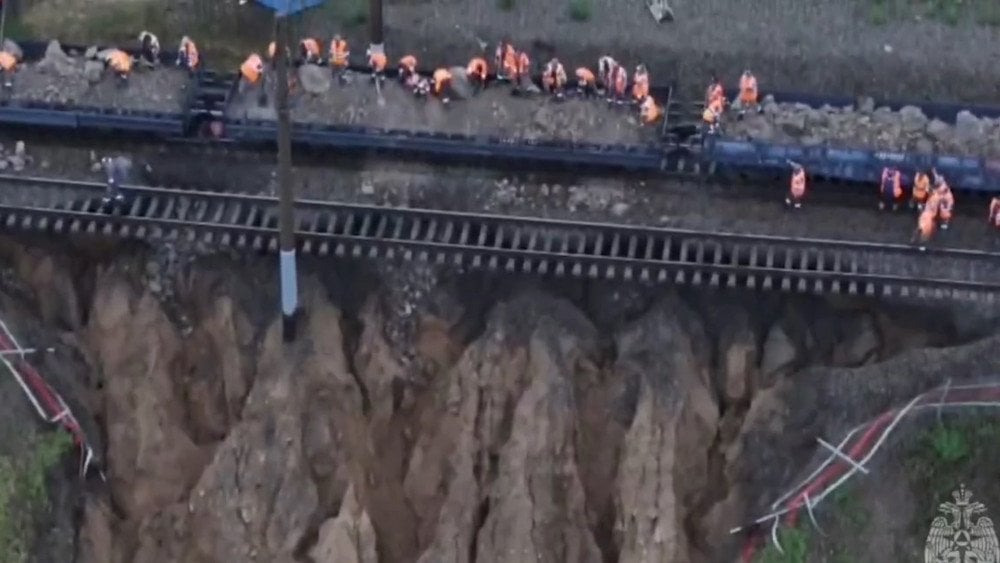
Railroad destroyed by torrential rain at the Darasun Station suspended train service on a key section of the Trans-Siberian Railway in Russia
The storm reached the regional capital, Chita, where the streets were flooded, roads turned into mud pits that trapped vehicles, and power outages occurred in several districts.
People who’ve survived major devastating events like the disaster in Texas or any other natural calamity naturally hope it’s over and won’t happen again.
We’re used to the idea that bad things eventually pass and things get better. But this time is different.
Everything we’ve been witnessing for decades now shows only one thing: the situation is getting worse. Catastrophically worse.
And here lies the paradox: there are over 8 billion of us — many smart and educated people. We have a real chance to save the planet and preserve life. There are scientists who understand the root causes of what's happening and propose solutions. But sadly, many people simply don’t want to acknowledge the threat. Because accepting the obvious would shatter their plans, hopes, and ideas about the future.
This also applies to most scientists and politicians — the very people we, as a society, have entrusted to address the escalating climate disasters.
Friends, just look at the world. We all know from books and movies what a zombie apocalypse is — when a virus turns most people into zombies and only a few remain healthy.
Well, we are living through such an apocalypse, when even seemingly intelligent people speak nonsense about obvious facts.
And all hope rests with the few “healthy” ones. Judging by the state of the world today,they’re still outnumbered by the “infected.” Yes, some may not see a way out right now, but that doesn’t mean there isn’t one. Sometimes it feels like everything is falling apart and you just want to give up.
But if we are human beings, if we want to live, if we understand and value life, then why should we surrender? Because of someone else’s ignorance or shortsightedness? Because of someone's stupidity or greed? Are we supposed to just give up and look away?
If you have a conscience, how can you live like that? Those who haven’t been “infected” by this zombie-virus must not give up. We must live with conscience and hold our ground. If we truly unite and move forward together, we can overcome all the crises facing our society — even the most terrifying one: the climate crisis.
Alone, we won’t make it. Together — we can do a lot.
You can watch the video version of this article here:
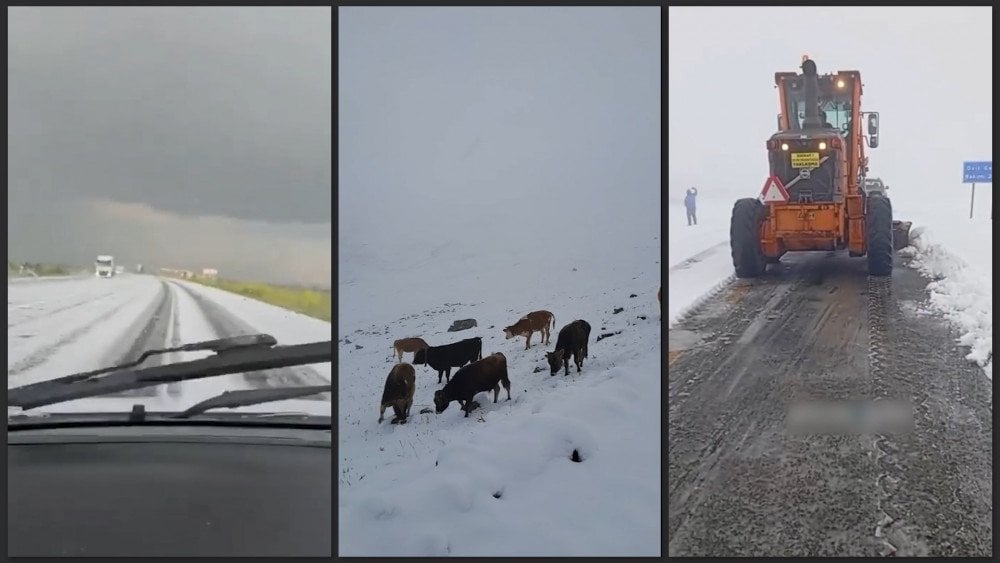
Leave a comment